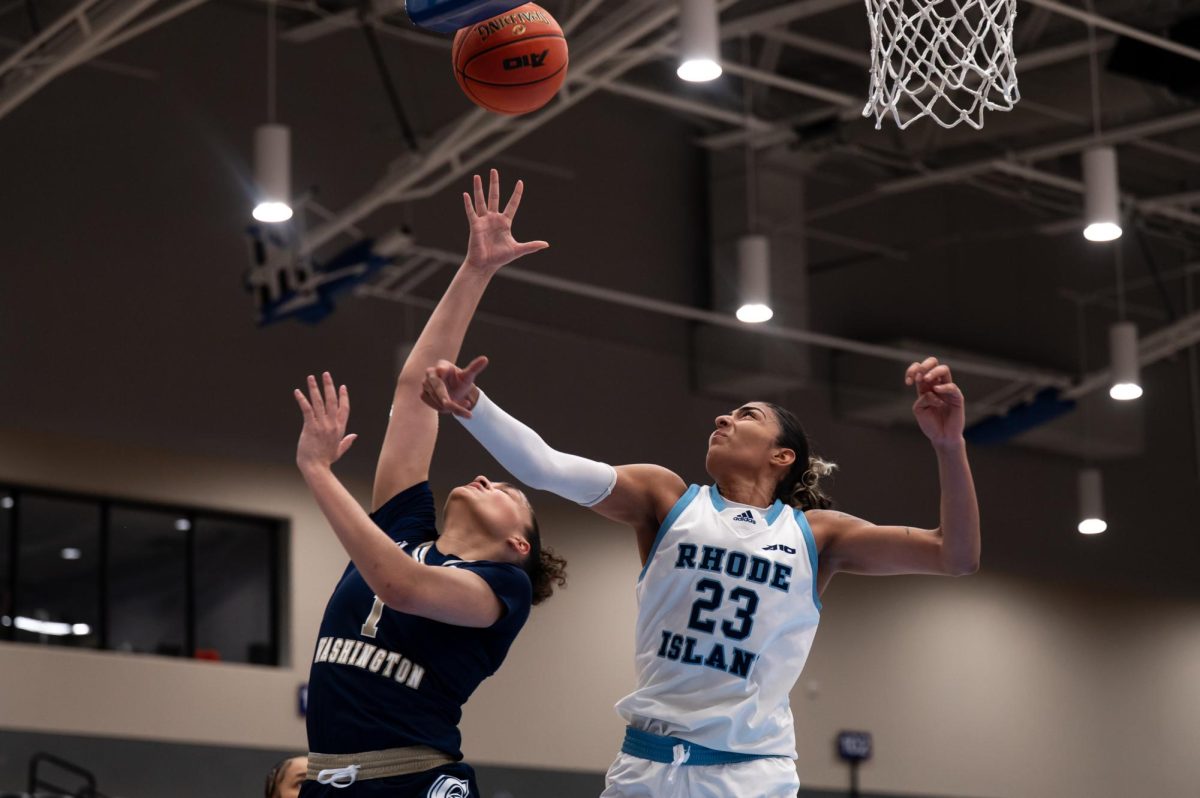The planes were the first indication that the team’s luck was changing.
It had been a slow afternoon on the water. The surface, like plate glass, reflected an almost cloudless sky. Aesthetically pleasing, perhaps – but not ideal sailing conditions.
Just as the Colonials were about to head back to the docks, coach John Pearce noticed that the planes approaching nearby Reagan National Airport were banking at a slightly different angle.
Gazing out into the distance on the Potomac, he saw the type of gently rippled water that meant one thing: wind. The coach yelled to his team, ushering the boats back out into the water and lining up the Colonials bow-to-stern to grab one last chance at a drill.
“One of the challenges of sailing is that you have to sail with the conditions that you get. You have to prepare,” Pearce said. “Sailors quickly pick up on that. It’s part of the sailing culture, to be flexible and deal with the wind you get every day.”
The inability to discern the atmosphere of its playing field is just one characteristic that sets the sailing team – GW’s newest varsity squad – apart from its counterparts. The Colonials sailed out of the nearby

Washington Sailing Marina, maneuvering into waters bordered by the District’s airport with the Washington Monument and U.S. Capitol jutting into the skyline as landmarks. On a regular basis, planes roar overhead, flying so close that you can almost see the grooves on the plane’s wheels from below. They provided puffs of air that give the Colonials an extra push, and the team has learned to read how a craft landing can indicate the wind’s direction.
Pearce perched on a launch boat that wove through the Colonials’ eight sailboats, calling out to the team with an easy, relaxed charisma. The sailing team officially became the 23rd varsity sport July 1, a result of the yearlong athletics review and a multiyear push from past and present club sailing members. The improvements were immediate: easier transportation to practice, more access to gear and funds and, perhaps most importantly, the acquisition of a coach.
“That’s one of the benefits of being a new program is that everyone is really grateful for all of the support they get,” Pearce said. “Practice is my favorite part, by a long shot. I’d rather practice all day, if I could.”
He tossed an orange inflatable buoy over the launch, held in place in the water by a Tropicana bottle filled with weights. The makeshift marker indicated the start of a mock race, a drill Pearce said functions like running a half-court basketball scrimmage. Senior Dickie Sant said the new coach emphasizes a pyramid approach to training, starting with the basics and working up to skilled maneuvers. A lot of what the team practices is muscle memory and boat handling, showcasing Pearce’s bottom-up style.

GW’s first competition was this past weekend, the team heading to two separate regattas to mark the beginning of the program. GW finished 13th of 17 teams at Old Dominion’s Riley Cup, with senior Ian Connors finishing 16th of 18 sailors. And now, with its inaugural competition behind it, the team can focus on forming an identity, a process that begins with the basics.
“We’ve been able to focus on working out and getting stronger, rather than even just our skill level. Rather than just being sailors, we’re athletes and sailors now,” senior Skye Kussmann said. “We have times to work out, we have scheduled workouts that are meant for us. It gives us a little more initiative to do it together.”
The transition to varsity status has brought more than just a coach to the Colonials – it’s also brought new rules and regulations for each member of the team. For Sant and Kussmann, who have been heavily involved with the team since their freshman years, there are a fair amount of “hoops to jump [through],” Kussman said, but they pay dividends.
Kussmann said she’s seen the team grow each year, watching as the Colonials transitioned from a club that took the Metro to practice to a varsity team with NCAA profiles.
“We don’t have to worry about getting to practice. We don’t have to worry about funding our team. We don’t have to worry about people showing up for practice,” Sant agreed. “I think that we, as a team, have improved more in these last two weeks under John Pearce than we have in the last three years combined.”
Pearce is also working to develop the delicate balance of teamwork that sailing requires. Each practice, the Colonials are assigned different crew and skipper pairings, learning which fellow athletes they work best with.
The need for unity plays out on the water as the boats tack and jibe: Both members of a boat transition their weight at the same time as the boom swings overhead and the craft tilts almost parallel to the water. It’s a delicate balance that causes onlookers to hold their breath – it seems the slightest mistake could send the sailboat capsizing into the water.
“Two people should move almost as one body within the boat. Ideally, they should be thinking on the same wavelength as well,” Pearce said.
Pearce wants to see the united front that’s emphasized in a sailboat translate into the team’s relationship with the university it represents. He has a chance, as the program’s first-ever coach, to put his stamp on the team. While his foremost goal is to create a powerhouse program, Pearce also thinks conditions are right for a unique relationship to bud between the sailors and the rest of GW.
“I also think that there’s a big opportunity for GW to use sailing in other ways. Use it as a recreational sport for other students,” Pearce said. “It’s just a great way to get out of the city, get out on the water, nice change of scene.”






